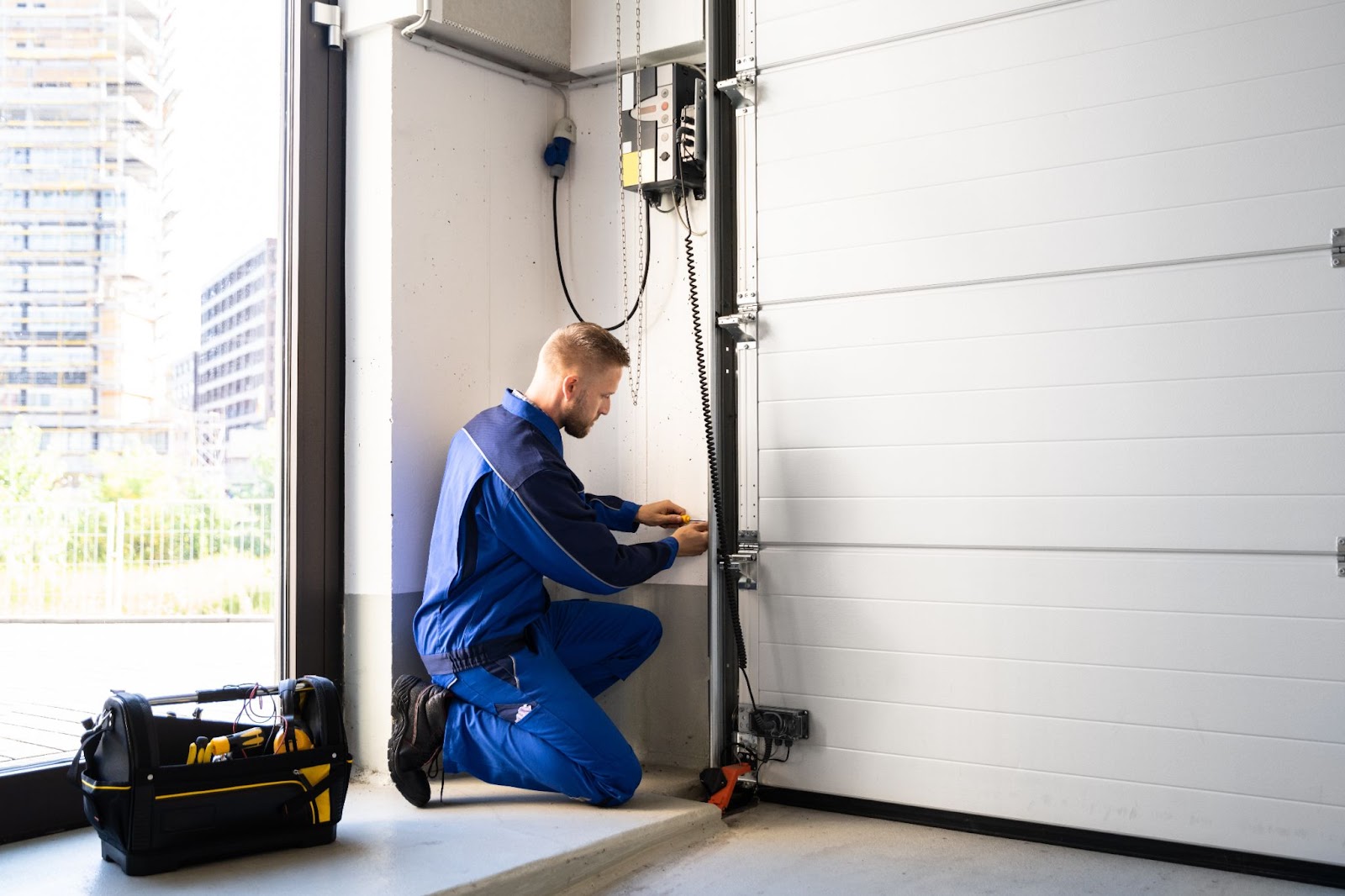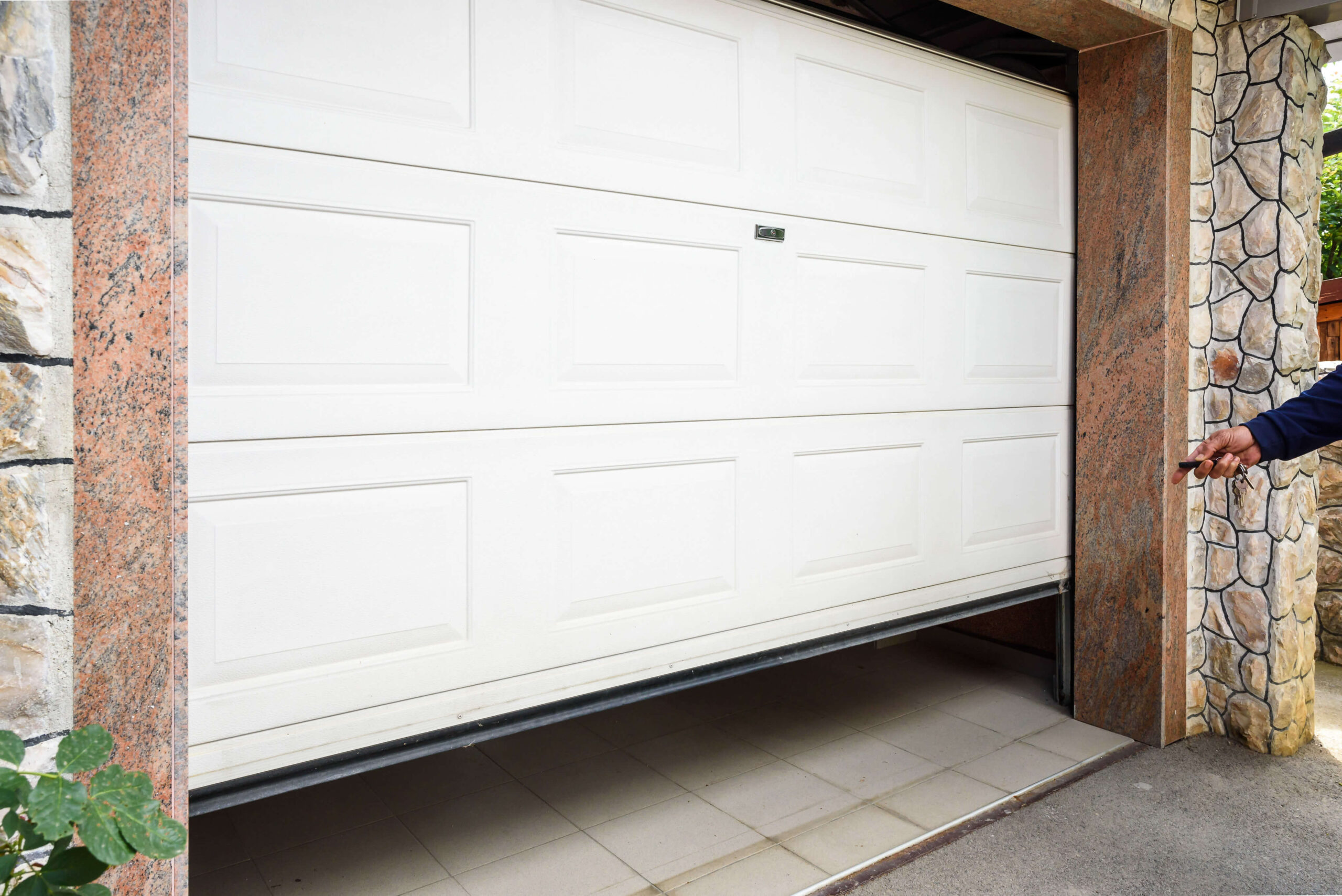Comprehending Typical Problems That Affect Your Garage Door Functionality
Recognizing the usual issues that can hinder garage door performance is necessary for homeowners aiming to ensure both performance and safety. Problems such as misaligned tracks, malfunctioning sensors, and harmed springtimes can result in considerable functional obstacles. In addition, issues like uncommon sounds or remote failings can show deeper issues that require immediate focus. By familiarizing yourself with these prospective pitfalls, you can take proactive steps to keep your garage door's integrity. The question stays: what are the key indicators that signal an issue, and exactly how can they be effectively resolved?
Misaligned Tracks
Misaligned tracks represent a common concern that can dramatically hinder the functionality of a garage door. The tracks, which guide the door's activity, are important to making sure smooth operation. When these tracks end up being misaligned, they can trigger the door to operate unevenly, possibly resulting in jamming or complete failing to open up or close.
Several variables can add to track misalignment, consisting of architectural shifts in the garage, wear and tear in time, or improper setup. Regular maintenance is crucial to spot any kind of early signs of imbalance - Arizona Garage Door Services. Property owners should regularly evaluate the tracks for signs of flexing or obstruction, ensuring they are tidy and totally free from particles that might impede motion
If imbalance is thought, it is suggested to deal with the concern immediately. Attempting to compel the door open or closed can worsen the trouble, resulting in even more substantial damage. In most cases, realigning the tracks might require customized tools or expertise. Getting the assistance of a certified garage door technician can ensure that the tracks are correctly aligned, recovering the door's capability and boosting safety and security in the process.
Faulty Sensors
Malfunctioning sensing units can significantly impair the performance and security of a garage door system. These sensing units, commonly situated near the base of the door tracks, are designed to identify barriers in the door's path, making sure that the door turns around if something remains in the means. When these sensors malfunction, the door might stop working to operate appropriately, positioning a threat of injury or residential or commercial property damage.
Usual issues connected with damaged sensing units include misalignment, obstructions, or electrical failings. Misaligned sensors might not communicate properly, leading to the door falling short to shut or open. Physical blockages, such as dust or debris, can additionally block the sensing unit's view, triggering the system to misinterpret its surroundings. In addition, circuitry issues or power supply issues can cause the sensors not functioning at all.

Damaged Springs
Just how can house owners identify when their garage door springs are damaged? Among one of the most visible signs is an inequality in the door's operation. The springs might be compromised if the garage door shows up to be unequal or does not open or close efficiently. Property owners need to observe the door's movement; if it has a hard time to lift or comes down swiftly, this can show a springtime problem.
One more sign is a noticeable inspection of the springs themselves. Try to find any kind of gaps or breaks in the coils, as well as rust or corrosion, which can damage the springtimes over time. They may need replacement if the springs appear extended or lengthened. In addition, uncommon noises during operation, such as loud bangs or a substantial jerking movement, can signal that the springtimes are failing.
It's essential to keep in mind that garage door springtimes are under tremendous tension, making them harmful to take care of without appropriate training. Property owners need to avoid attempting repairs themselves and must contact a specialist technician to examine the situation and do necessary replacements. Prompt attention to damaged springtimes is necessary for maintaining garage door performance and ensuring security.
Noisy Operation
A garage door that operates noisily can be a source of inconvenience for property owners and might suggest underlying issues that require attention. Loud operation can originate from a number of elements, including worn-out rollers, loose equipment, or absence of lubrication.
Worn-out rollers are commonly the primary perpetrator, as they can produce grinding or rattling sounds when the door shuts and opens (Arizona Garage Door Services). Metal rollers can wear down with time, bring about raised rubbing and noise. Changing these with nylon rollers can considerably minimize noise levels, as they have a tendency to operate even more quietly
Loose equipment, such as bolts and nuts, can additionally add to a loud garage door. As the door moves, vibrations can create these elements to rattle, developing unwanted noises. Regular inspection and firm of these aspects can help preserve a quieter procedure.
Additionally, an absence of lubrication on relocating parts, consisting of joints and tracks, can lead to squeaking or grinding sounds. Applying a silicone-based lubricating substance can lessen these sounds and expand the lifespan of the elements. Resolving these concerns immediately can not just enhance the door's performance however also enhance the overall peace of your home atmosphere.
Remote Issues

First, make certain that the remote's batteries are fresh and correctly set up. Weak or diminished batteries are the most typical perpetrators behind a non-responsive remote. Inspect for any blockages or electronic interference that can interrupt the signal if the batteries are great. Things like nearby wireless devices or perhaps thick walls may restrain interaction between the remote and the garage check my source door opener.
If these steps do not fix the problem, think about reprogramming the remote. This procedure generally entails holding back certain switches on the remote and the garage door opener, following the producer's guidelines.
In some instances, the remote itself might be damaged or harmed, requiring a substitute. Normal upkeep and prompt battery substitutes can help stop remote control problems and ensure smooth operation of your garage door, preserving the comfort that property owners expect.
Conclusion
In conclusion, keeping garage door functionality needs vigilance in monitoring common concerns such as misaligned tracks, damaged sensors, and damaged springtimes. Attending to these issues quickly can prevent operational failures and boost security. Furthermore, identifying the importance of noisy procedure and remote control breakdowns is vital for making certain dependable efficiency. Normal upkeep practices, including lubrication and complete examinations, function as efficient procedures in recognizing and mitigating potential check here issues, inevitably advertising the longevity and performance of garage doors.
Understanding the typical issues that can prevent garage door functionality useful source is essential for property owners intending to ensure both effectiveness and security.Misaligned tracks stand for a typical issue that can considerably impede the capability of a garage door. Enlisting the help of a qualified garage door professional can make certain that the tracks are appropriately lined up, recovering the door's functionality and enhancing safety and security in the procedure.
These sensors, generally situated near the base of the door tracks, are designed to find barriers in the door's path, making certain that the door turns around if something is in the means (Arizona Garage Door Services).In conclusion, preserving garage door capability needs alertness in keeping an eye on common issues such as misaligned tracks, faulty sensors, and damaged springtimes